Generative AI is fueling a revolution in what software can achieve. New apps provide astonishing capabilities for creating content, art, code and more with just text prompts.
According to a McKinsey survey, 93% of IT leaders will adopt some form of generative AI within one year. The hype is justified - these tools showcase the immense potential of large language models.
Applications like Anthropic's Claude and Open AI’s ChatGPT captivate users through remarkably human-like conversational abilities. Google's Bard aims to match its rival's prowess. RunwayML enables anyone to build AI models with drag-and-drop simplicity.
Midjourney produces stunning AI art that led to over 1.6 million users joining its early access per Midjourney. Hugging Face grants access to leading NLP models like GPT-3 used by over 500,000 developers. These are just some of the game-changing generative AI apps pushing boundaries daily.
Let's explore the top options that make leveraging this transformative technology easy and accessible to all. The possibilities are endless. of Generative AI firsthand and witness its game-changing potential!
What are Generative AI Apps?
Generative AI apps are software applications that utilize artificial intelligence algorithms to generate content autonomously.
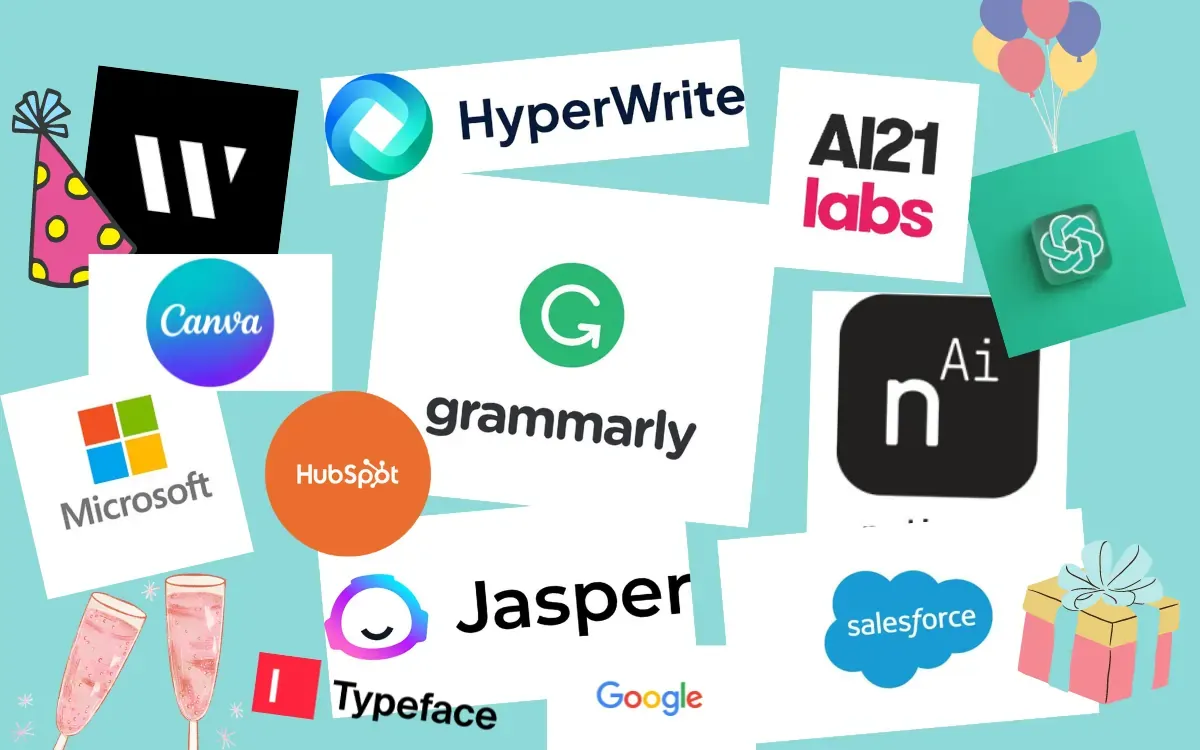
These apps go beyond traditional rule-based systems and employ machine learning techniques to create innovative and creative outputs.
They can learn from existing data and patterns and generate new content based on those learnings.
What sets generative AI apps apart is their capacity to produce content that is not explicitly programmed or pre-defined. They can produce novel and unexpected outputs, making them an exciting tool for various industries.
Make best out of Generative AI by using it in chatbots for various use-cases such as:
Why are Generative AI Apps used?
Generative AI apps have gained popularity across industries due to their numerous benefits and advantages. Let's explore some of the key reasons why these apps are being widely utilized
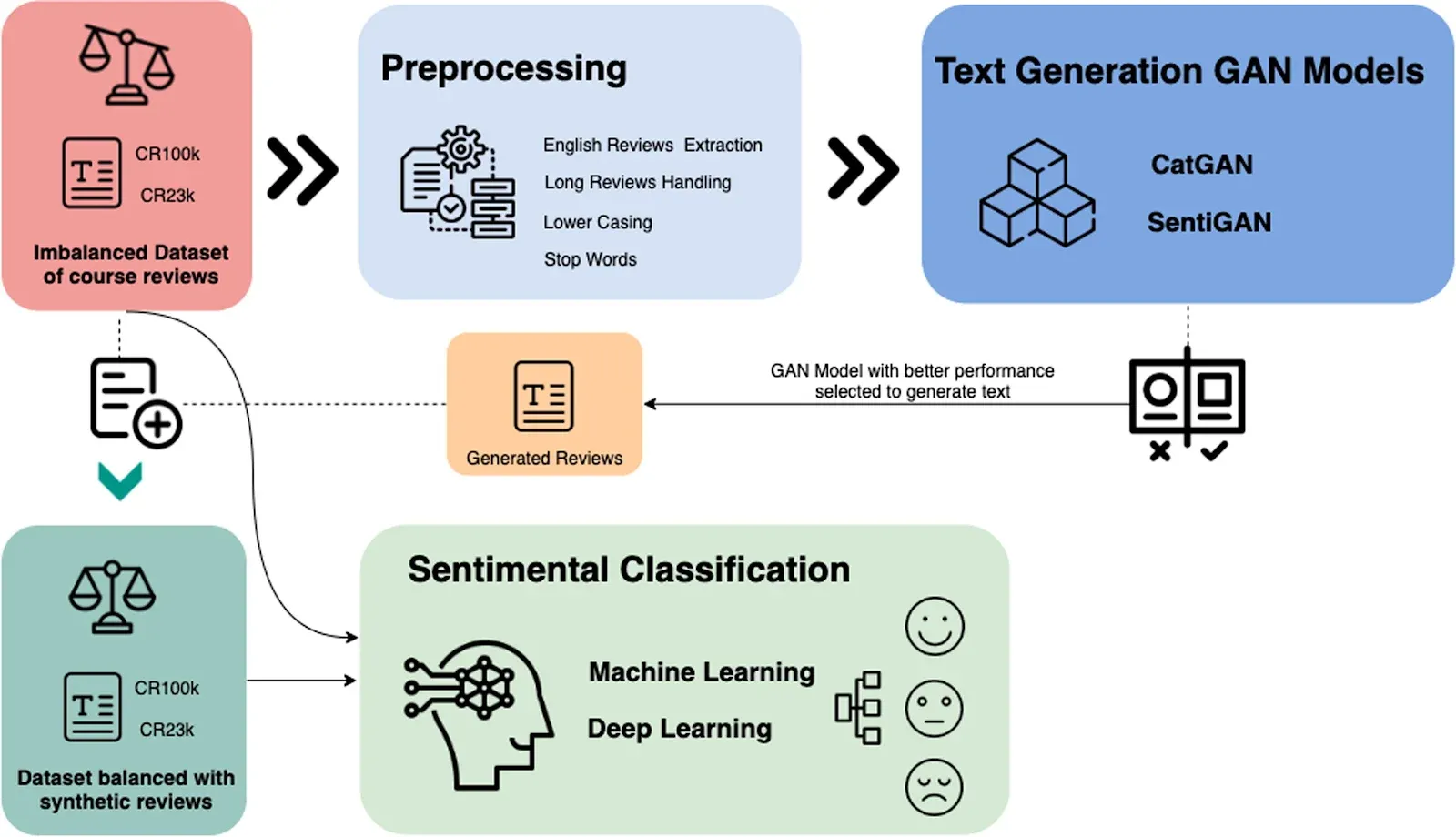
Enhanced creativity and innovation
Generative AI apps act as powerful tools to boost creativity and innovation. By generating unique content, they provide a fresh perspective and inspire users to think outside the box.
These apps can help artists, designers, and content creators break through creative blocks, offering new ideas and possibilities.
Time and cost savings
Generative AI apps streamline content creation processes, saving both time and cost. Instead of starting from scratch, users can leverage the app's AI capabilities to generate content quickly.
This allows them to focus their time and resources on refining and enhancing the generated output, rather than spending countless hours on initial ideation.
Personalization and customization capabilities
Generative AI apps excel at personalization and customization. They can adapt to individual preferences and tailor content according to specific requirements.
This level of customization enables marketers to deliver targeted messages, designers to create bespoke solutions, and developers to offer personalized experiences to their users.
Who makes use of Generative AI Apps?
Generative AI apps have found applications in various professional domains. Let's explore some of the key industries and roles that make use of these innovative tools.
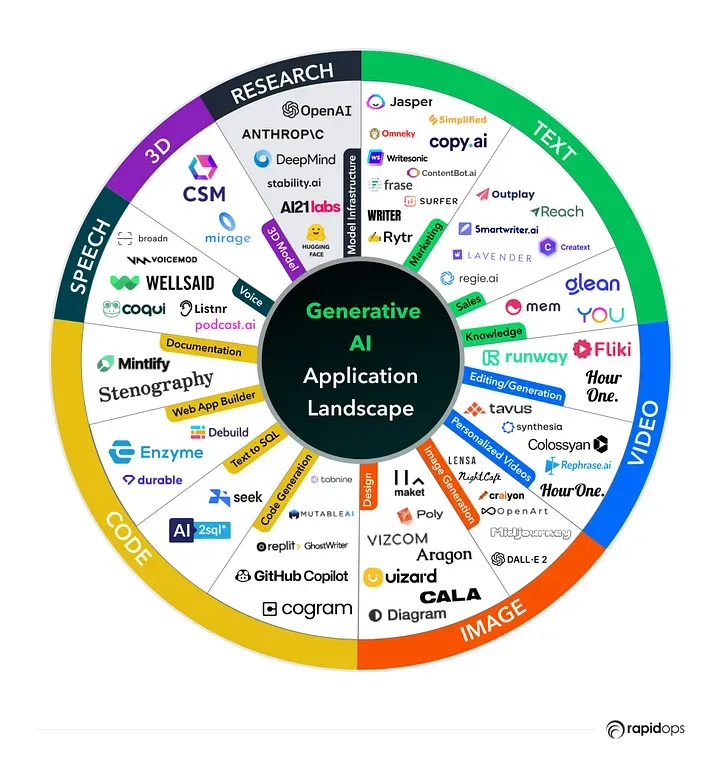
Artists and designers
Artists and designers utilize generative AI apps to expand their creative horizons. These apps can inspire new artistic directions, generate unique design elements, and even assist in the creation of entire compositions.
They act as invaluable tools for pushing the boundaries of artistic expression.
Content creators and marketers
Generative AI apps have transformed content creation and marketing strategies. These apps can generate engaging social media posts, catchy slogans through an AI slogan generator, and even assist in drafting articles or blog posts.
They offer content creators and marketers a fresh approach to crafting compelling and attention-grabbing messages.
Engineers and developers
Generative AI apps have practical applications in engineering and development fields. They can assist in generating code snippets, designing user interfaces, and even aiding in architectural design.
These apps provide developers with time-saving solutions and facilitate the creation of complex systems.
Researchers and scientists
Researchers and scientists benefit from generative AI apps in various ways. These apps can help in data analysis, simulations, and generating new hypotheses.
They enhance research capabilities and enable scientists to explore uncharted territories in their respective fields.
Where Generative AI Apps can be used?
Generative AI apps find applications in a wide range of industries and creative pursuits. Let's explore some of the key areas where these apps are making an impact.

Visual arts and design
In the realm of visual arts and design, generative AI apps offer a new dimension of creativity.
They can assist in generating unique patterns, and artwork, and even help in architectural design. These apps provide artists and designers with a novel approach to creating visually stunning and original pieces.
Music and sound generation
Generative AI apps are revolutionizing the world of music and sound generation. These apps can create original compositions, generate unique melodies, and even assist in sound design for various media projects.
Musicians and composers can leverage generative AI to explore new sonic territories and push the boundaries of musical expression.
Writing and storytelling
Generative AI apps are changing the landscape of writing and storytelling. They can help in generating plot ideas, and character profiles, and even assist in drafting content.
These apps provide writers and storytellers with a wealth of inspiration and can help in overcoming writer's block.
Video game development
Generative AI apps have found extensive applications in video game development.
They can aid in generating game levels, and characters, and even assist in creating game mechanics. These apps empower game developers to create immersive and dynamic gaming experiences.
Fashion and product design
Generative AI apps have made significant strides in the fashion and product design industry. They can help in generating unique clothing designs, and product prototypes, and even assist in material selection.
These apps offer designers an innovative toolset to create cutting-edge and highly customized designs.
Generative AI apps are transforming the way we approach content creation and innovation. With their ability to generate original and unexpected outputs, these apps provide endless possibilities across industries.
Whether you're an artist, marketer, engineer, or scientist, exploring generative AI apps can unlock new realms of creativity and efficiency.
Suggested Reading:
5 Game Changing Generative AI Apps
Generative AI is transforming what's possible with technology. New apps offer groundbreaking capabilities in content creation, programming, media generation, and more.
These tools showcase the immense potential of large language models. Let's explore 5 game-changing generative AI apps you need to try now.
ChatGPT by Open AI
ChatGPT captivated the world by showcasing astoundingly human-like conversational abilities. This free chatbot can answer questions, explain concepts, write content and even resolve ethical dilemmas.

According to Open AI, ChatGPT reaches over 100 million active users faster than any consumer app in history. With advanced natural language processing, it delivers remarkably articulate responses on virtually any topic while rejecting harmful requests.
ChatGPT signals a paradigm shift for conversational AI. Its API enables building customized chatbots too.
Google Bard
In response to ChatGPT's buzz, Google unveiled Bard as their alternative conversational AI system. Bard aims to provide high-quality, factually accurate responses by grounding them in recent real-world information.
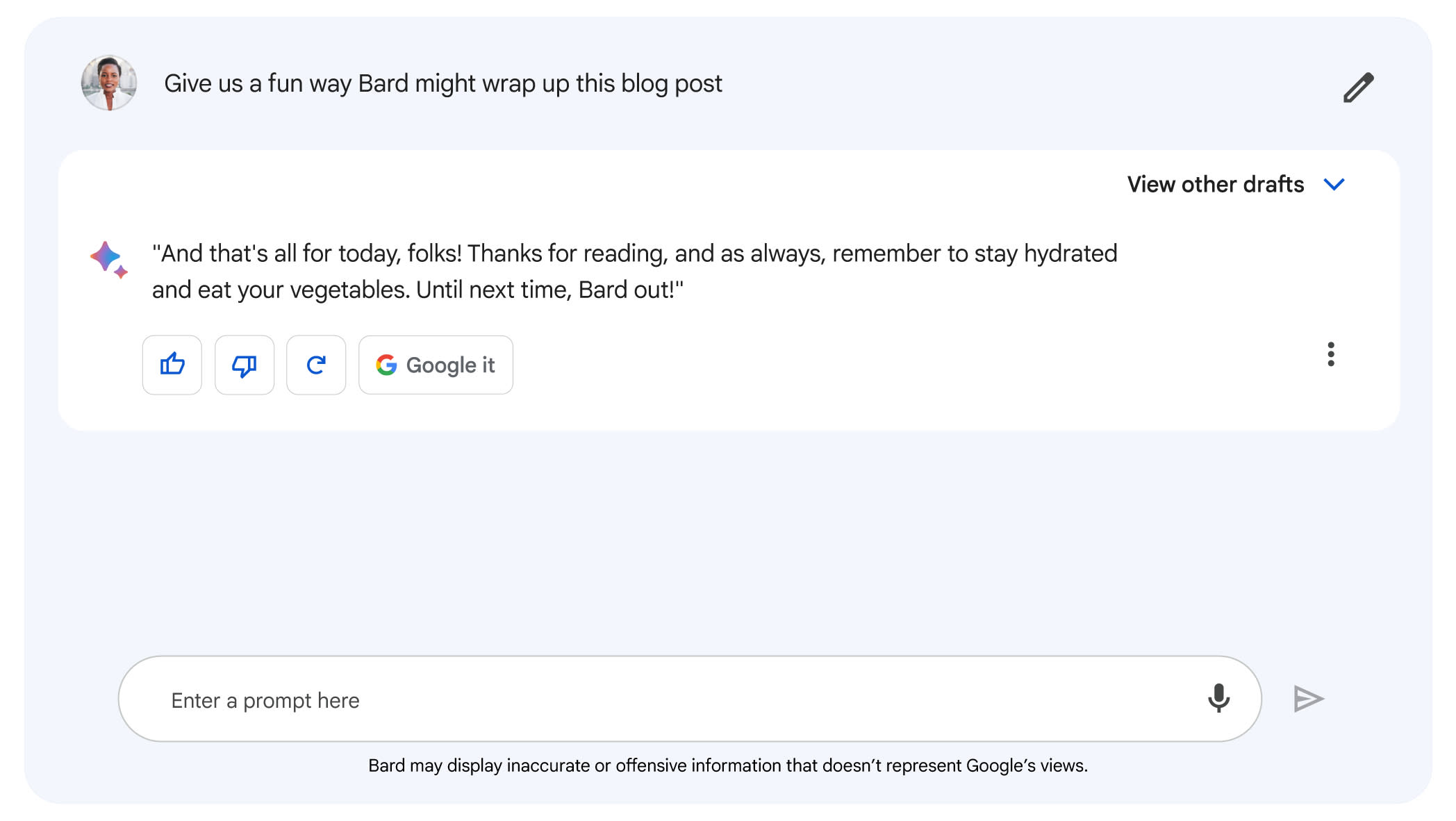
While details remain limited pending a public release, Google touts Bard's safety features and plan to make it an 'ELI5 for the world' - able to break down complex topics.
With Google's immense computing resources, Bard promises to be a formidable ChatGPT rival. The AI race is accelerating.
However, Google stumbled with Bard's launch by showcasing it prematurely with a promotional video that included an inaccurate sample response. This demonstrated the challenges in delivering robust conversational AI reliably.
Google will need to back up Bard's promises with rigorous evaluations before public access. Fact-checking mechanisms and transparency around Bard's capabilities and limitations will be necessary as well to rebuild trust.
While Bard's potential remains, Google faces an uphill climb delivering on expectations after this misstep.
But with proper training and testing, Bard could evolve into a viable ChatGPT competitor.
RunwayML
RunwayML allows anyone to build and deploy AI models using simple drag-and-drop interfaces, no coding needed. It offers generative capabilities like image generation, text synthesis, audio narration and video creation powered by leading AI frameworks.
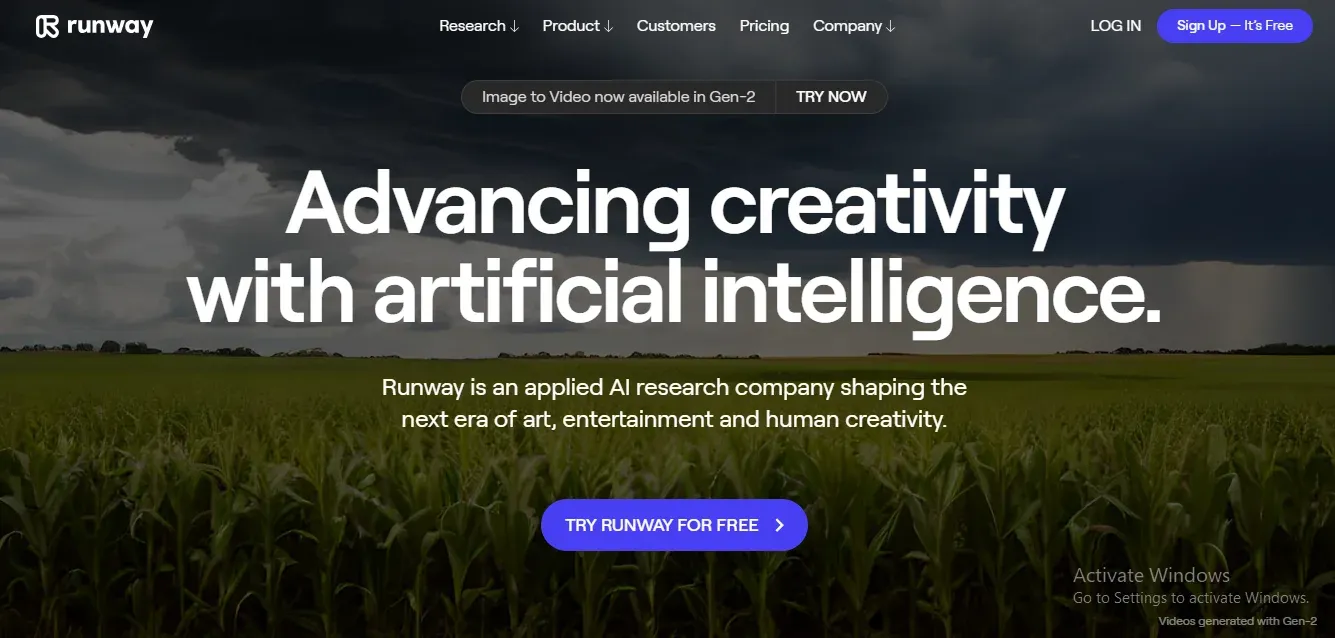
RunwayML democratizes AI by lowering barriers for non-experts. The free community tier grants access to core features. According to RunwayML, over 775,000 users have already created AI applications with the platform.
While RunwayML makes developing AI accessible, there are risks with enabling novice users to deploy generative models. Harmful biases and inaccuracies can propagate easily without enough expertise.
RunwayML tries to mitigate this by evaluating community projects and through ethical AI education resources. But responsible and fair usage relies heavily on individual users. Organizations leveraging RunwayML's enterprise tier for internal applications should implement rigorous governance including output verification.
Furthermore, RunwayML must continue expanding guardrails as AI capabilities advance. Democratization is powerful but can be double-edged. Maintaining high standards will be key as hobbyist toy projects transition into impactful real-world applications.
Midjourney
Midjourney focuses on generative art - creating stunning AI-generated images and 3D scenes from text prompts. Built on top of machine learning models like CLIP, its capabilities and output quality improve constantly through research partnerships.

Midjourney can imagine any scene or concept described. Over 1.6 million users have joined its early access per Midjourney. Easy accessibility via Discord and affordability make it popular for digital artists, designers and creators.
However, controversies have emerged around copyright and generative art. Since Midjourney remixes training data to produce new images, the legal standing for its artistic outputs remains disputed. While Midjourney claims any generated imagery is owned by the user, copyright experts argue samples may still belong to original data sources.
Until settled legally, this presents a gray area for commercial usage and distribution.
There are also concerns around AI art diminishing human creatives' opportunities and IP rights. Midjourney must continue addressing these issues, especially as capabilities advance to videos and 3D-model generation.
Implementing mechanisms for users to validate originality and properly credit any source works could help ease disputes. Overall, better frameworks governing usage rights are needed as generative art becomes mainstream.
Hugging Face
Hugging Face offers an expansive catalog of AI models to incorporate natural language processing into applications. Co-founded by AI thought leaders, it provides APIs and SDKs to easily leverage models like ChatGPT and GPT-3.
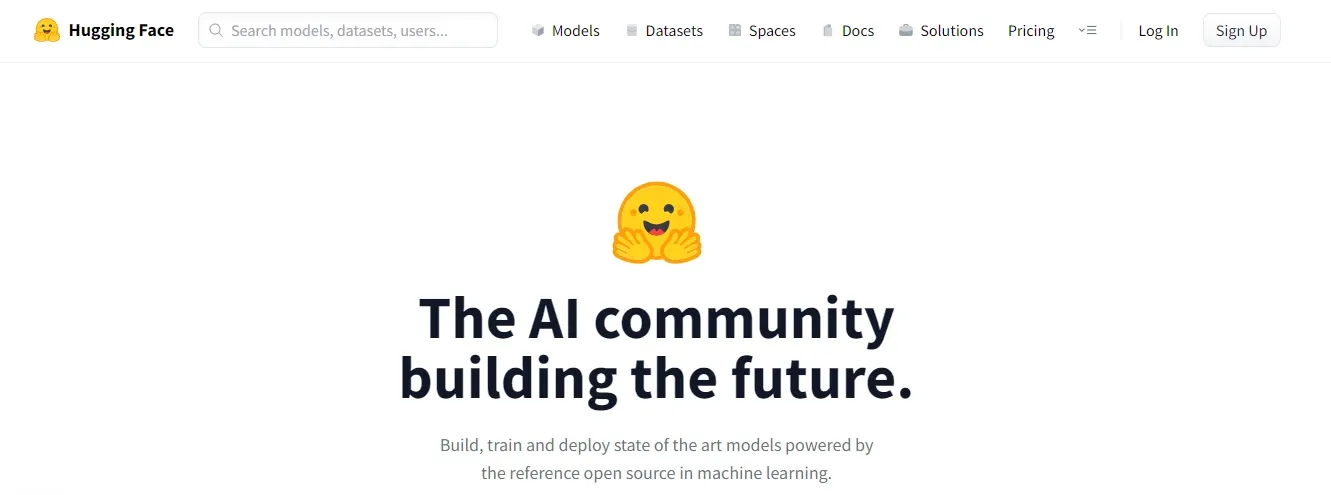
The free community tier grants limited usage for testing. With over half a million users on Hugging Face, it leads in delivering NLP model experimentation and deployment for enterprises. The company recently raised $100 million in funding as well.
However, concerns exist around the potential for misuse and abuse of the powerful AI models accessed through Hugging Face. Without proper safeguards, the platform could enable propagating misinformation, phishing schemes, and generating questionable content.
Hugging Face must implement rigorous controls and monitoring especially as capabilities improve. Usage should be tiered appropriate to context - an individual exploring AI experimentally versus enterprise applications demand different levels of governance.
Continuously educating users and showcasing responsible use cases is important too. As an influential force in AI democratization, Hugging Face must champion ethical development.
With cutting-edge generative models within reach of anyone, the need for caution and scrutiny is paramount.
Suggested Reading:
Conclusion
Generative AI apps have opened up new possibilities in content generation, code writing, and creative endeavors.
They leverage the power of neural networks and deep learning algorithms to assist users in various tasks. ChatGPT, AlphaCode, Github Copilot, Bard, and Cohere Generate are just a few examples of the incredible applications of generative AI.
From enhancing creativity to automating conversations, these generative AI apps deliver incredible new capabilities.
With ongoing progress, generative AI promises to reshape industries. While managing risks is crucial, the possibilities are boundless.
The transformative power of AI is within reach for all through these platforms. The future looks bright with generative AI in our hands. feedback to refine and enhance the app's capabilities.
Get your own AI based Chatbot today, Try BotPenguin-
As technology continues to advance, it's essential to explore and try out these game-changing apps. They can enhance productivity, spark creativity, and provide valuable assistance in various domains. Embrace the power of generative AI and unlock new possibilities in your work and projects.
Frequently Asked Questions (FAQs)
What are some examples of generative AI applications?
Examples of generative AI applications include language translation, image generation, music composition, and chatbots.
How can Runway ML help me create generative AI models?
Runway ML is a platform that provides users with the tools to create custom generative AI models without coding. It offers pre-built models and allows users to train their own models.
What is GPT-3 and how does it work?
GPT-3 is an AI language model developed by OpenAI that uses machine learning algorithms to generate human-like text. It analyzes vast amounts of data to generate coherent and fluent language.
What is DALL-E and how does it work?
DALL-E is a generative AI model created by OpenAI that generates images from textual descriptions. It uses machine learning algorithms to create images and has the ability to understand text inputs.
How can I use DALL-E to generate new images?
Users can input textual descriptions and keywords into DALL-E, and the model generates original images based on the text input. Users can also fine-tune their results by adjusting parameters such as style and resolution.
What are some other potential applications for generative AI?
Generative AI has potential applications in various fields such as fashion, gaming, and virtual reality. It can be used to create realistic 3D models, fashion designs, and virtual environments.

